Amazing Antiquarian #4: John Nicolson
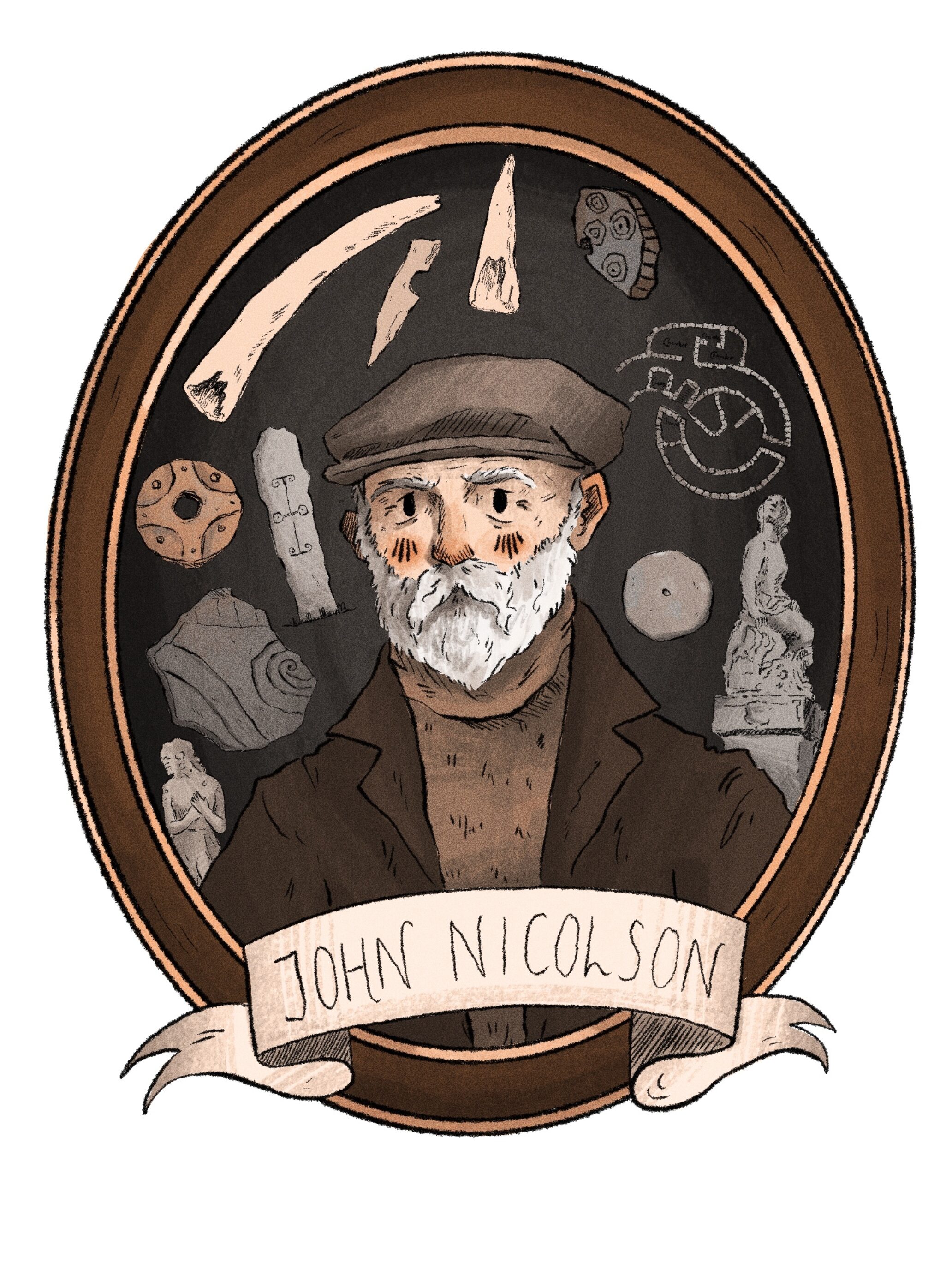
John Nicolson (1843 - 1934), imagined by the wonderful Morvern Anderson, who has produced many lovely images for our 'Amazing Antiquarian' series.
John Nicolson is, quite simply, our absolute favourite.
A fiercely proud Caithnessian with a penchant for art and archaeology - he is an inspiring character, and one who deserved far more recognition - not least in his home county of Caithness.
This blog has been written by Ian Leith of Wick Heritage Museum, which had a special exhibition dedicated to John Nicolson last year.
We are also indebted to Nicolson's grandson, Alistair Sutherland, for his help and his good nature and insightful discussions over the years.
John Nicolson is one of Caithness’ greatest sons – a visionary, artist, sculptor, archaeologist, and historian
John Nicolson was born in 1843 at Stemster near John O’Groats. His father, a farmer, also John Nicolson and his mother, Jessie Manson.
John was the youngest of a family of 6. His eldest brother David Nicolson became a teacher and prominent member of the Caithness educational world. Next in the family line came William who emigrated to Canada in 1879 and was to die there in 1901. William was one of the Edmonton’s earliest settlers a strong Nicolson family connection remains there today. John also had three sisters, Christina, Elizabeth, and Janet.
David Nicolson, son of John Nicolson Junior also emigrated to Canada. In 1926 The Northern Ensign
newspaper printed an article recording the return of David Nicolson and his wife to Canada following a
trip to Caithness and New Zealand.
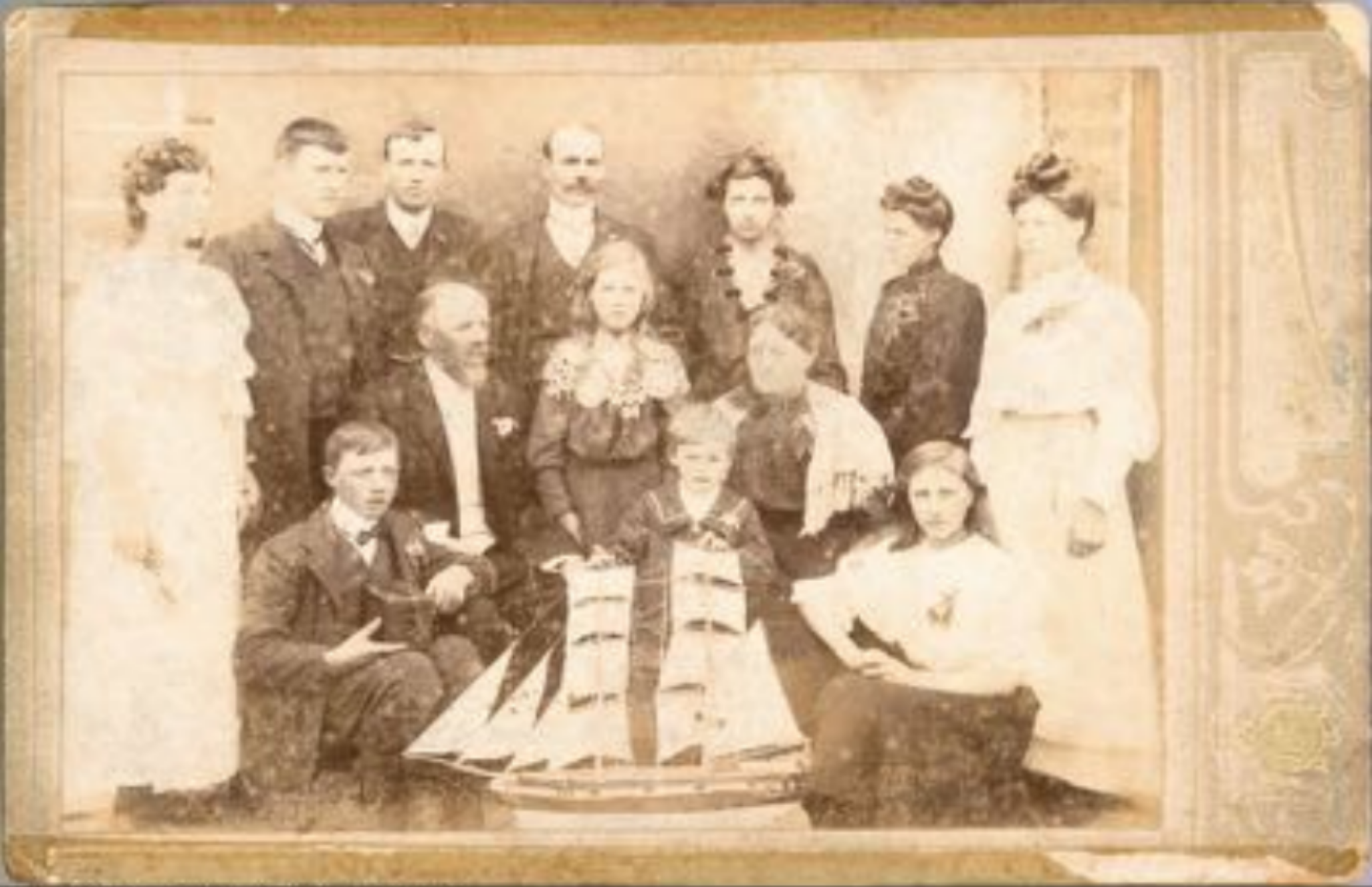
The Nicolson family (Image credit: Alistair Sutherland / CANMORE)
By the age of fifteen John and his family had moved to the farm at Halfway House, Nybster, and it is there he began to create the first of his many artistic creations, that remain in the family home where his works are treasured and cared for.
On the original home and farm in Stemster the Nicolsons paid their rent to the Earl of Caithness. The farm at Nybster meant a change of landlord, being on the Freswick Estate. Around 1889 John Nicolson painted a depiction of an Estate Factor and possibly valuers of the Crofter’s Commission with a hillside backdrop. A number of crofters appear in the background. He painted from a blend of memory and imagination, creating a clear impression of the mood of what was often the dreaded rent day.
Once completed the painting was displayed in the showroom of J & J. M Calder, Cabinet Makers who had premises in both High Street and Union Street, Wick. Nicolson also painted this scene (below) featuring the Estate Factor, collecting the rents. Nicolson was using his painting to record history.
In 1874 John Nicolson married Janet Mowat and the couple had a family of ten children. Janet was born 1st Febrruary 1853, the daughter of David Mowat, farmer at Schoolery, Canisbay.
Family tragedy struck on 23rd March 1900 when John and Janet’s son, also John, died at the young age of 24. Like his father, and grandfather, before him, John was a farmer, although it is largely recognised that it was maybe not his most obvious desire in life. While he also set up a business transporting fish to market in Wick, it was his passion for art and history that most occupied his mind, and probably much of his time.
By 1880 John Nicolson was already being regarded as an antiquarian authority. A newspaper report of the time describes how men employed in draining on Freswick Hill found a buried coffin. Mr. Nicolson, the report adds, was in attendance and carrying out ‘explorations’
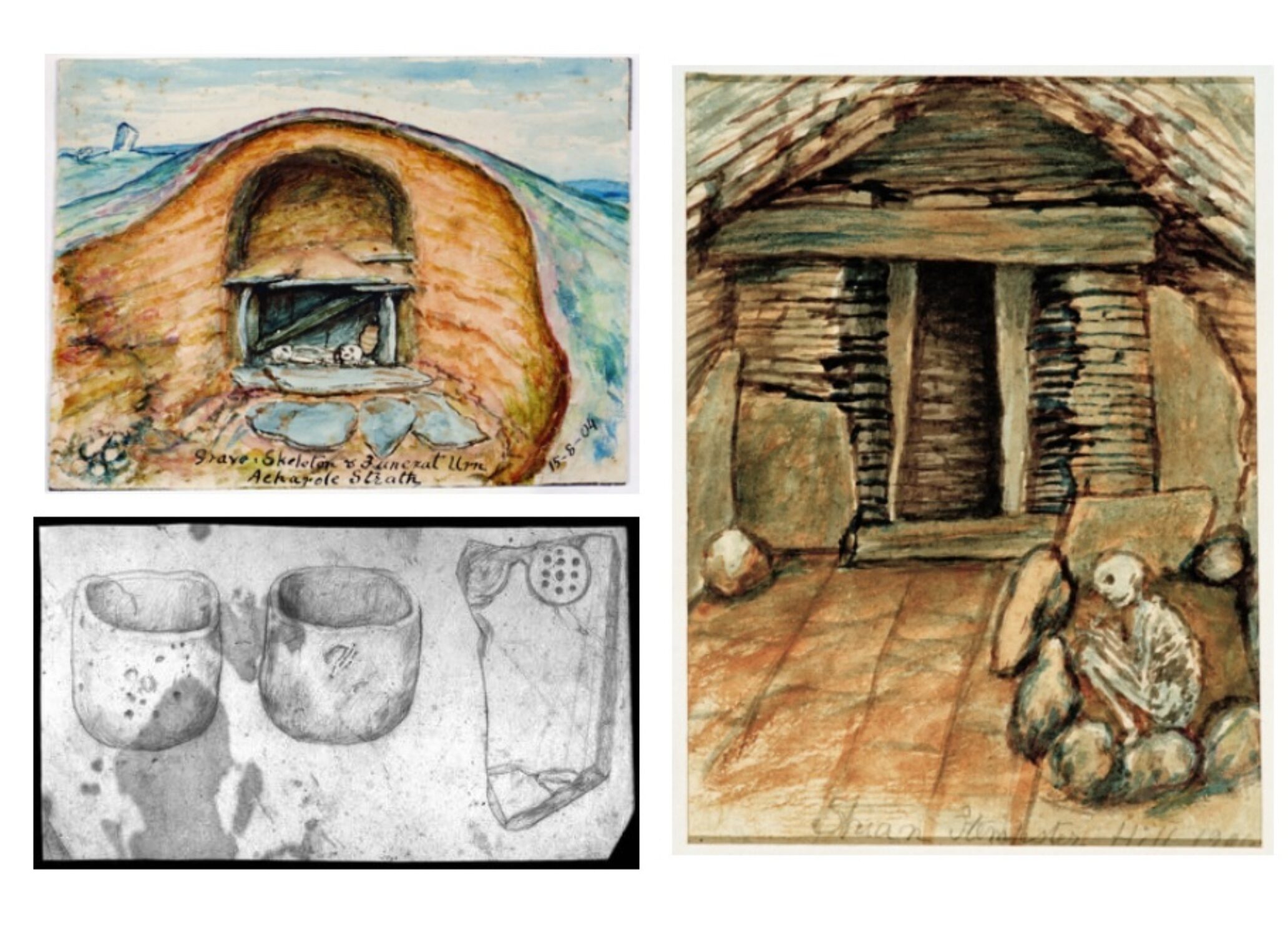
A selection of archaeological artworks by Nicolson (Image credit: Alistair Sutherland / CANMORE)
Among his most captivating paintings are a series of character studies. Many are not named. John Nicolson’s paintings are a wonderful mixture of the Caithness landscape and its people. His portraits allow the viewer to grasp a full understanding of their subjects. Nicolson knew these people and his pencil and paintbrushes capture both their inner and outer selves. Alexander Curle in his diary best sums up John’s works – “By nature he is an artist… his pictures are full of humour and character and his drawings of antiquities are neat and accurate”
In 1880 The newspaper The Northern Ensign carried a report of a trip to John O’Groats which included a visit to John Nicolson’s house. Nicolson is recorded as working on a bust of the “young heir of Hempriggs.”
In 1890 we find another reference to Nicolson the Sculptor. He produced a life size bust of Mr J W Evans, geologist and among other things, teacher of Geology in the Royal School of Science, London Evans was a contributor to the publication Geology of Caithness and author of ‘Geology of the North East of Caithness’ in Geological Magazine (Volume 8 , Issue 10 , October 1891 , pp. 478) The bust was originally displayed in the showrooms of Messrs J & J Calder in Wick and was intended to be placed in the School of Science in London.
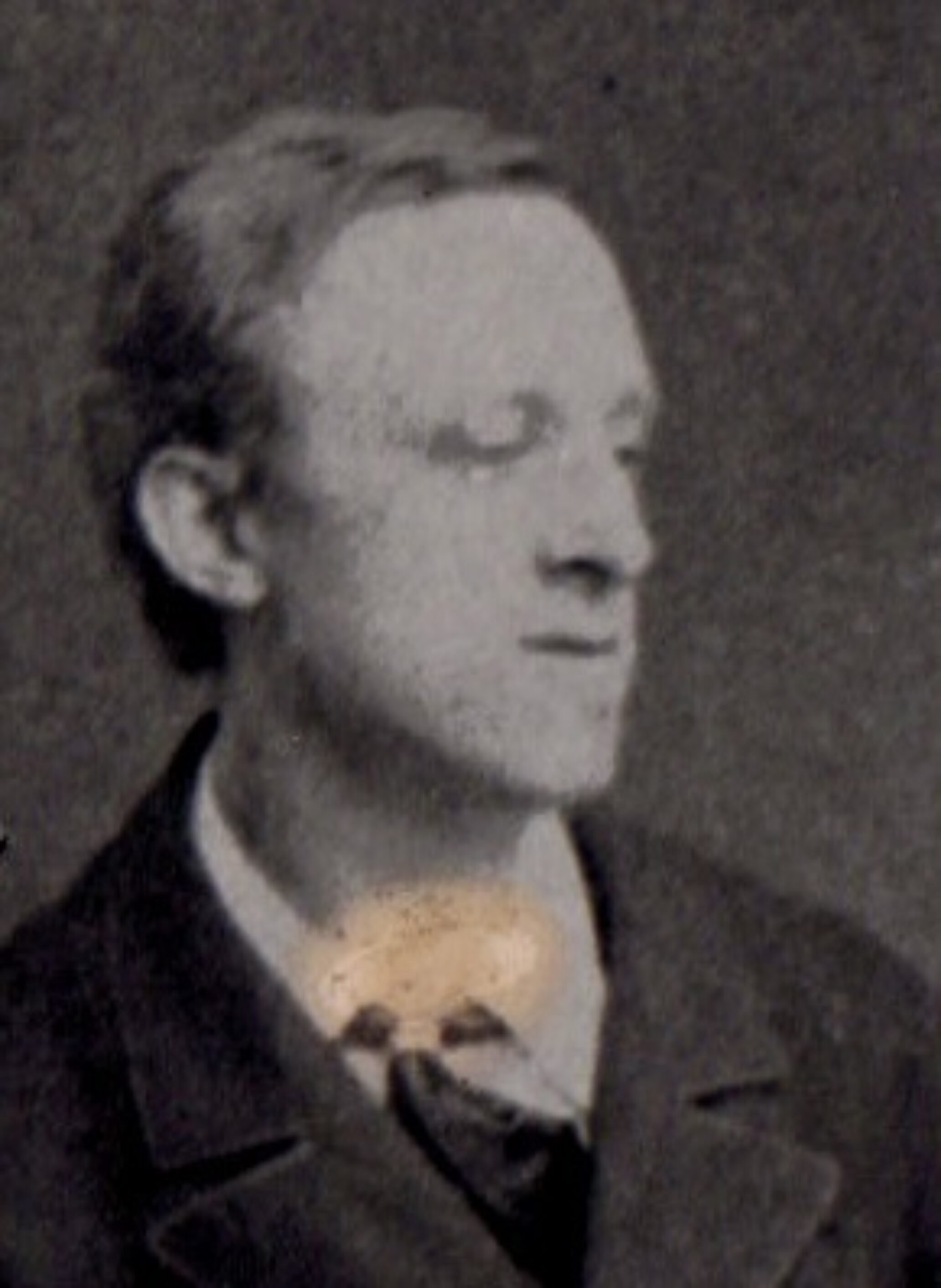
John William Evans
In 1901 John Nicolson prepared a model of the Caithness historian James T Calder, from which would be copied and form part of the seven feet statue of J T Calder that now stands above the Wick River. It is claimed he sculpted the piece from memory as well as talking to and submitting photographs to people who knew Calder.
The statue itself was the inspiration of Nicolson’s Caithness contemporary Pastor John Horne, himself an ardent local historian and prominent member of the Glasgow Caithness Association. In 1901 John Nicolson was presented with a “timepiece and other ornaments” by the Glasgow Caithness Association in recognition of this work.
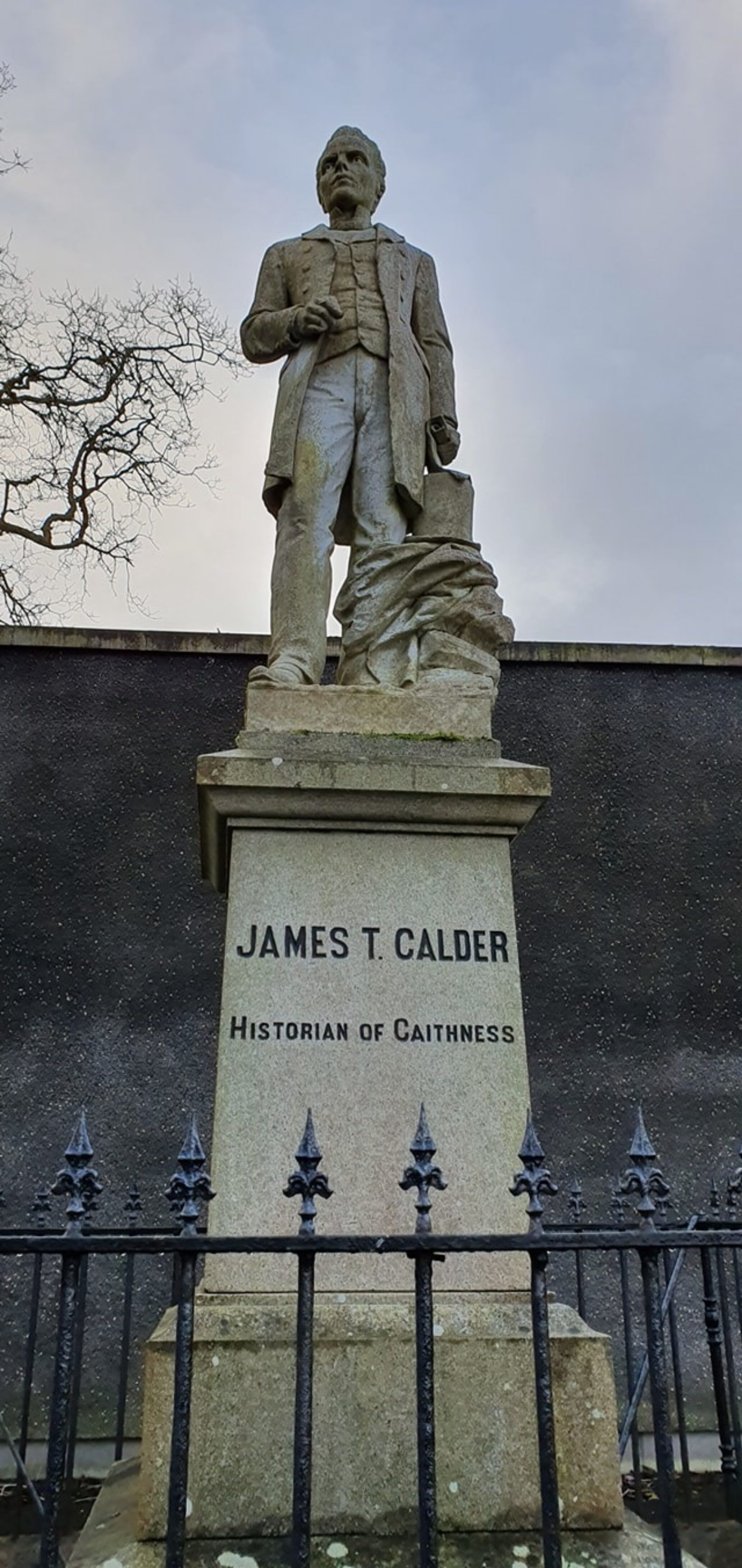
The statue of James T. Calder in Wick (Image credit: Chris Aitken)
As a scholar at Canisbay Free Church School, Nicolson is reputed to have claimed he took 'pride of place’ at the bottom of the class. As an artist and sculptor, Nicolson was largely self-taught and painted and sculpted using local materials and based his work on local characters and stories. His paintings of local scenes and local people were completed using different media that included watercolours, oils and simply household paint.
He had developed an interest in modelling at an early age, originally making clay pipes which were in great
demand by local fishermen and crofters before moving on throughout his life to produce some magnificent
memorial sculptures. Examples of his work can be seen throughout his native Caithness. He used the red
sandstone of the district.
Nicolson sculpted several gravestone memorials. Often spectacular in both their size and design and none
more so that the stone in Canisbay Church Yard, which marks his own and his family’s burial site.
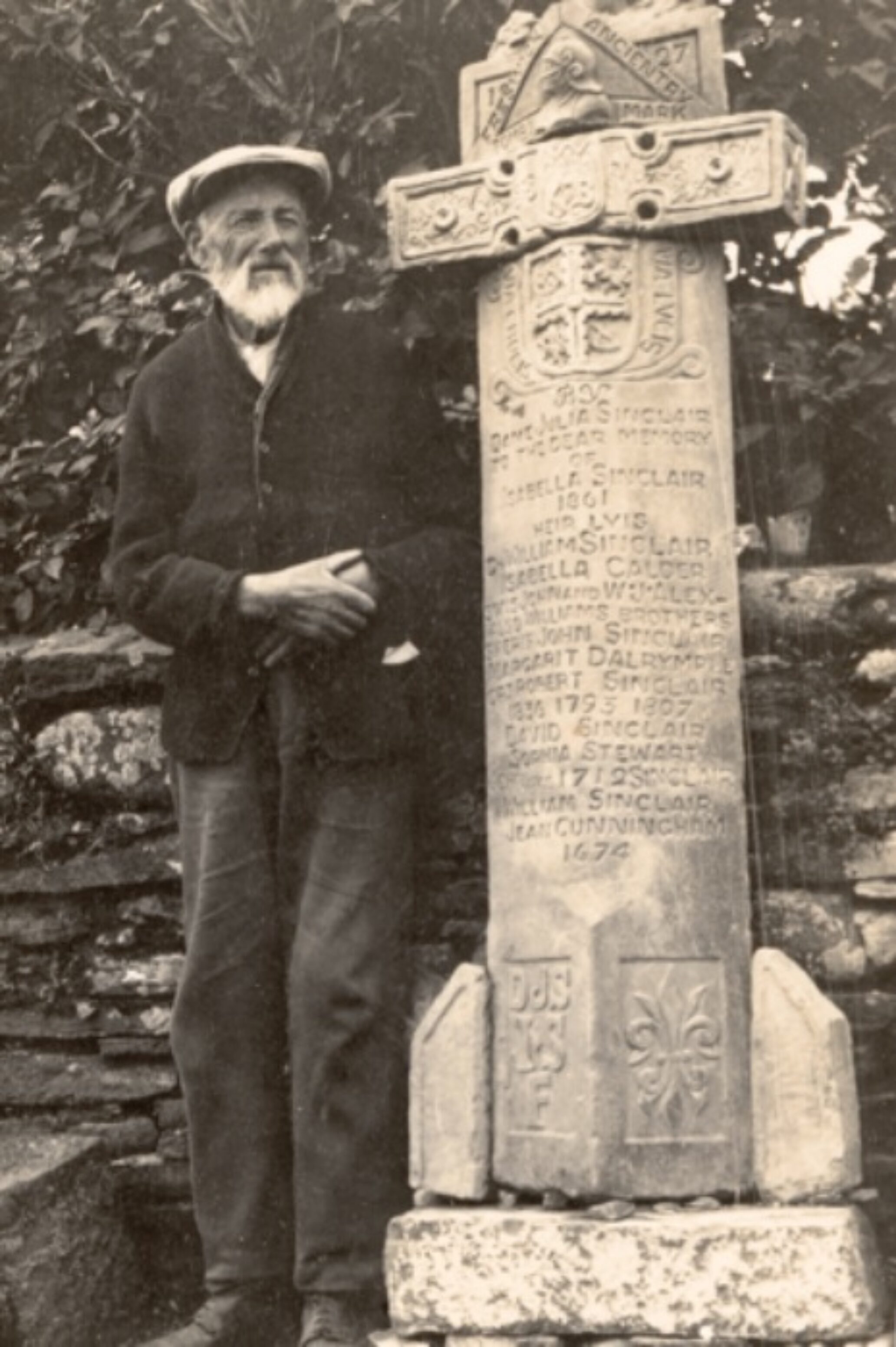
One memorial that has recently been re-united with Alexander Sinclair of the Freswick family was unearthed in the garden at Auckengill. (Image credit: Alistair Sutherland / CANMORE)
Nicolson himself has also been immortalised in artistic terms. His likeness is captured within the Johnston Photographic Collection and in this fine pencil study by fellow Caithness born artist George Bain.
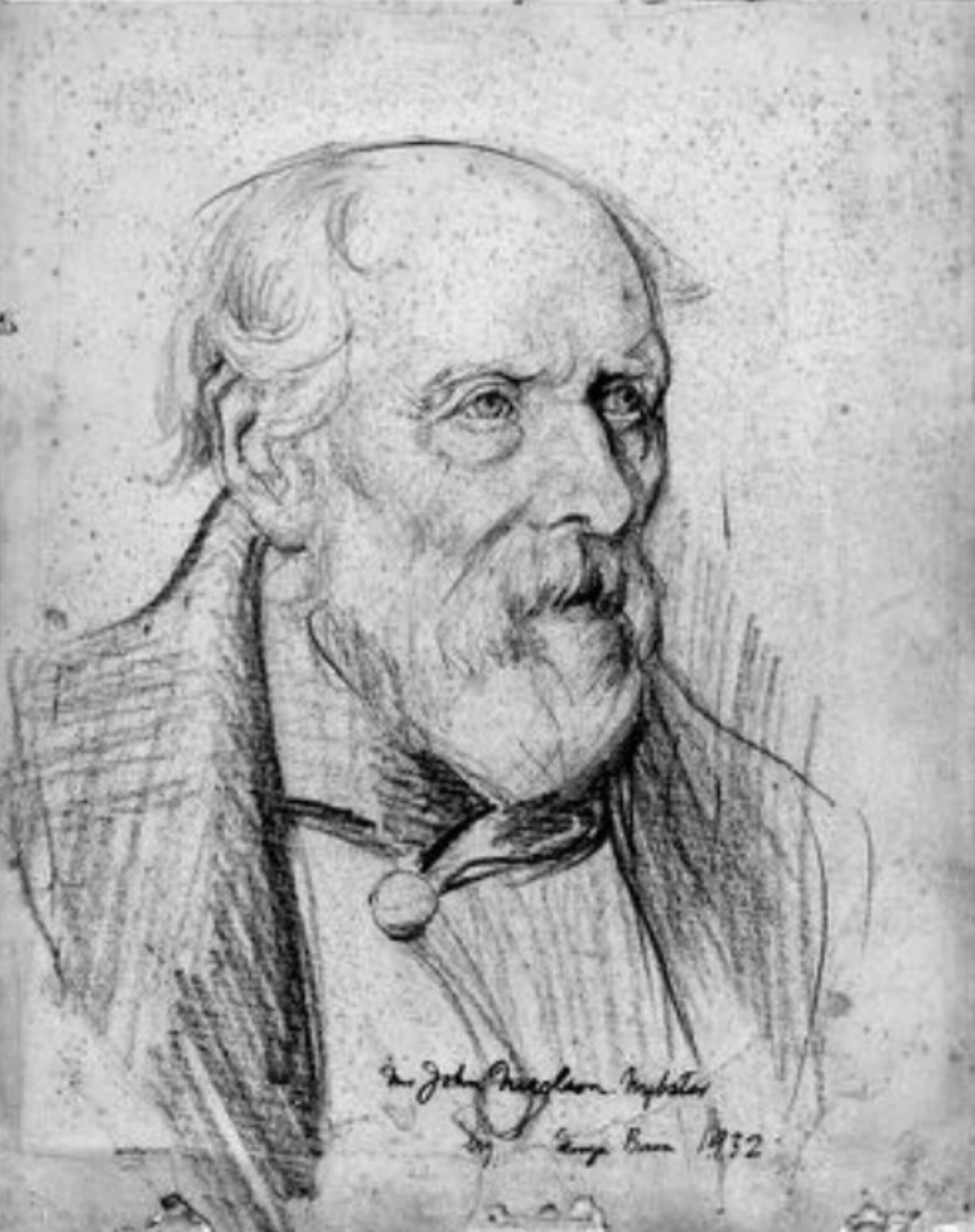
John Nicolson (Image credit: Alistair Sutherland / CANMORE)
The Caithness Research Society honoured John Nicolson by commissioning Scott Sutherland to sculpt a portrait . The cost of producing the bust was £15 yet a public subscription raised £70. When asked what he would like to do with the remainder of the money he said “I will not take the money but I will tell you what we will do with it. You will take the balance that is over and use it for the purpose of research in Caithness. I would like some black thread to sow on my button”
Unfortunately, Nicolson died before an official presentation of the bust could be made.
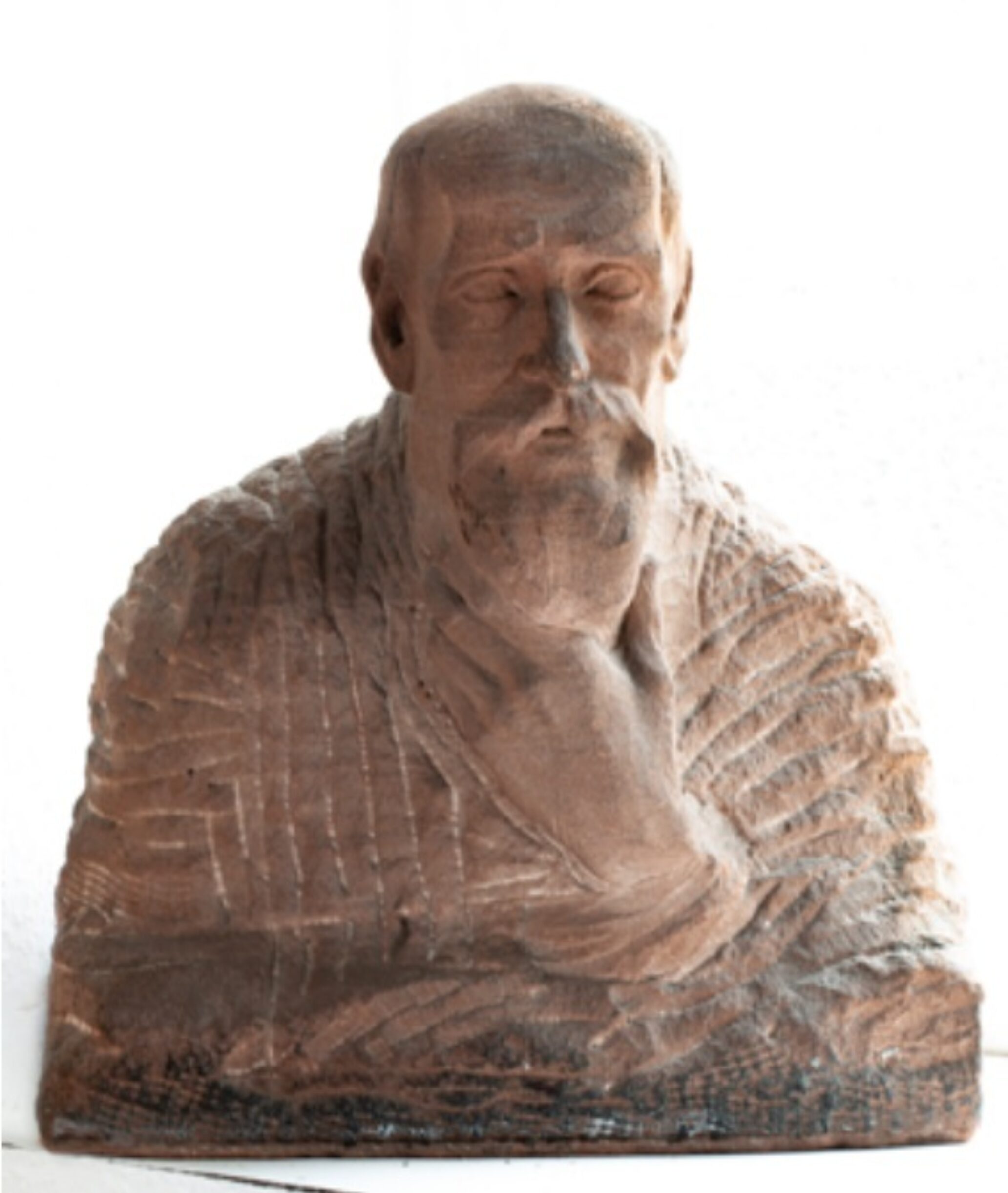
Sculpture of Nicolson by Scott Sutherland.
Many eminent people came to visit Nicolson’s house and one such visitor describes it as the 'University of Nybster'.
“His house is no ordinary place… it is a university … and we found that like other universities it had several departments. Mr Nicolson first introduced us to the archaeological section and we began our education by passing through the whales jaws…"” (The Northern Ensign 14th July 1891)
"…in the department of art we made the acquaintance of sculptures and plaster casting. The University has some antique documents in its library, some very old." (Northern Ensign 14 July 1891)
One such document in the possession of John Nicolson was the Valuation Roll of the County of Caithness for the year 1683.
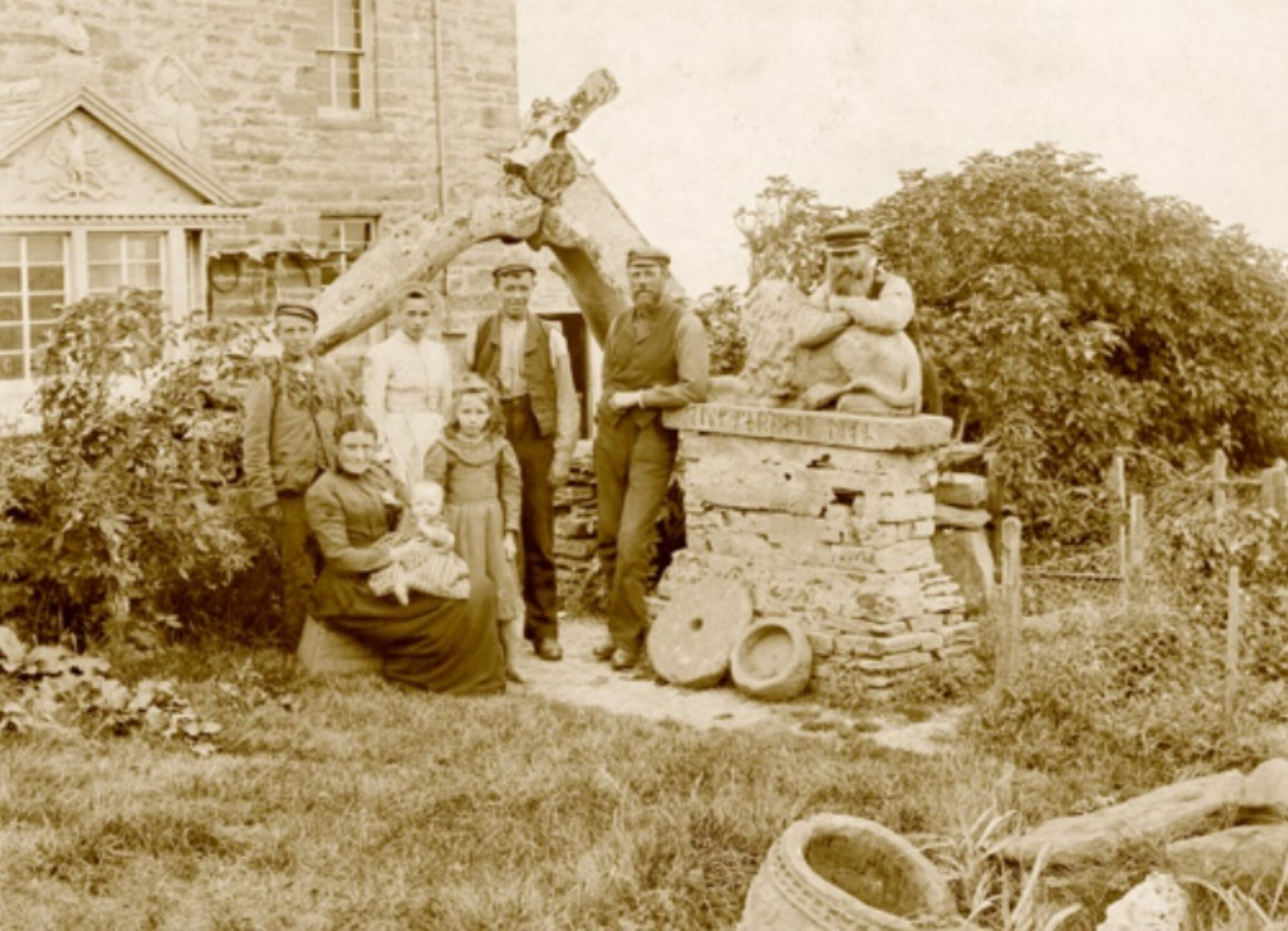
The magnificent jaw-boned entry to Nicolson's house, mentioned by the Northern Ensign, seen here along with the sculpted lion (Image credit: Alistair Sutherland / CANMORE)
An overnight visit by Henry Henderson, the Bard of Reay, had the Bard in fulsome praise of his host and his many works on display around the house. One work that “struck me as being particularly clever and original represented a sporting gentleman in the act of capturing a living seal.”
Henderson goes on – “as the night wore on, I, an eager listener drinking it all in, while John eloquently
discoursed on all manner of subjects pertaining to Caithness and its people, their history, traditions, legends
songs, folk lore etc. … the more I listened the more I admired the man, the sculptor, the painter and the
poet”
The evening wore on until at 2am Nicolson announced it was time for tea.
On another occasion in 1899 a group from the Royal Irish Antiquarian Society landed at Keiss harbour
with the purpose of visiting the brochs there, that had been opened by Sir Francis Tress Barry. In the
absence of Barry, John Nicolson took charge of the visit.
He was an enthusiastic collector of old documents and today his library contains many valuable historical texts, many of which were gifted to him by other eminent scholars. Nicolson had a particular interest in the Viking era, especially as the area of Freswick and Dunnet were renowned Viking strongholds. Here the great Norse pirate Sweyn Asleifson spent many winters awaiting the Spring and the resumption of his raiding expeditions. Some of his research and writing on this era survive.
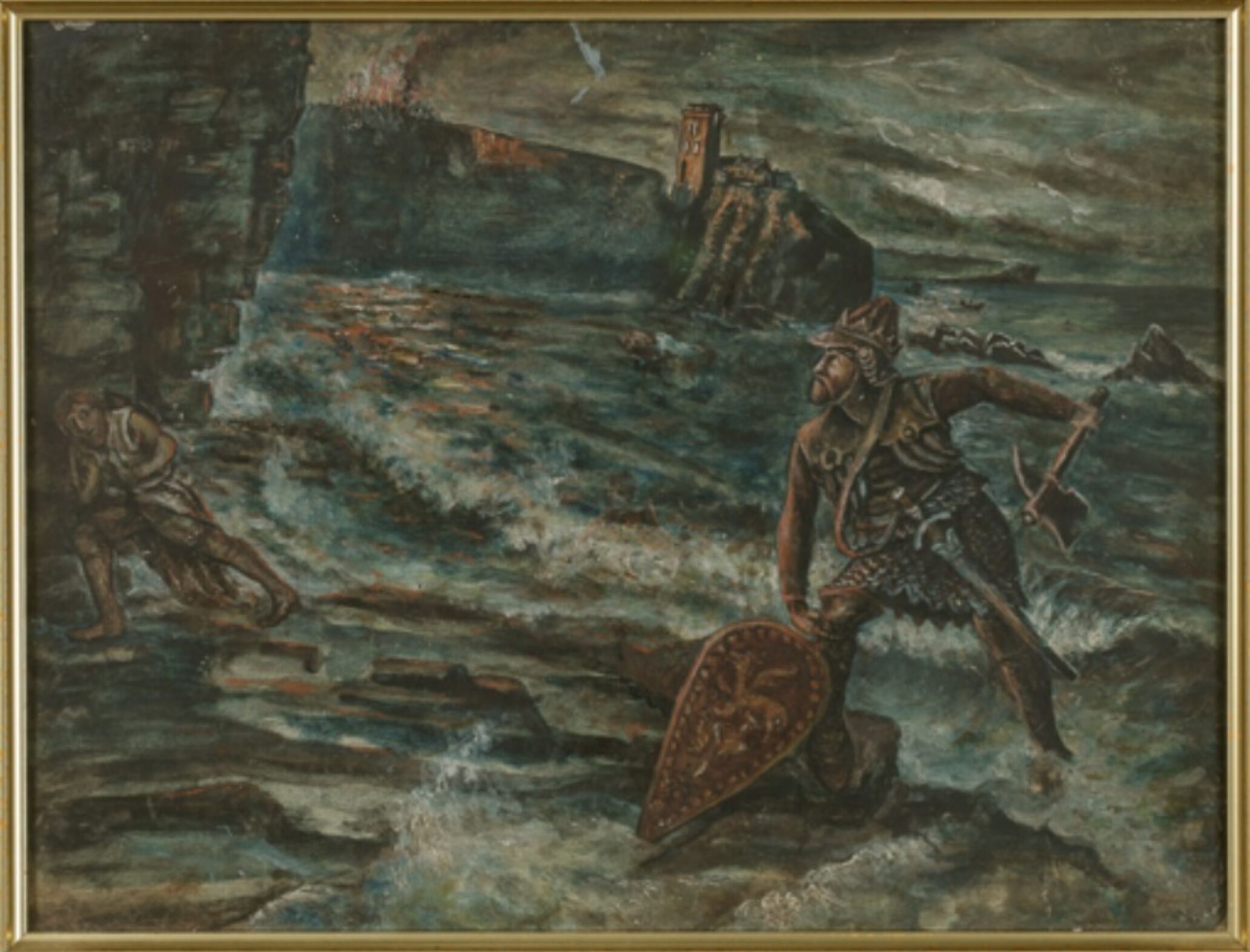
A Norseman by Nicolson! (Image credit: Alistair Sutherland / CANMORE)
He also had a strong interest in both his own and other Caithness family histories. Ironically, however he wrote very little, concentrating on recording history through his drawings, paintings, sculptures and maps

A map created by Nicolson detailing the sites he and fellow antiquarian Francis Tress Barry excavated between 1891 - 1904. Quite a few! (Image credit: Alistair Sutherland / CANMORE)
As a historian, he was renowned for his vast knowledge of both Caithness history and beyond. During a celebration in Keiss Castle to honour the wedding in London of William James Barry, son of Sir Francis Tress Barry to Lady Grace Murray, John Nicolson was able to recite a full history of the Lady Grace’s Murray antecedents, including a family connection with the nearby Ackergill Castle. The golden wedding of Sir Francis Tress Barry was also celebrated in the area. “Mr Nicolson had flags on his house as well as on the castle by the shore.” (John O’Groat Journal 7 June 1901)
Nicolson was respected as a speaker at such events. In 1892 a meeting of the Mutual Improvement Association, John Nicolson “delivered a very interesting lecture on coins ancient and modern.” (Northern Ensign 12 April 1892)
While he never strayed much beyond Caithness, he was an active member of the community. He served as Chairman of the Keiss School Board and initiated a local debating society where he played an active part.
It was his friendship and long-standing relationship with Sir Francis Tress Barry, father of the above groom, that kindled his interest in archaeology and his drawings of the archaeological finds from various digs, are today recognised as a unique pictorial insight into the past. He embraced the excavation work and spent many hours supervising the work and then minutely recording the scope, layout and artefacts from the various brochs.
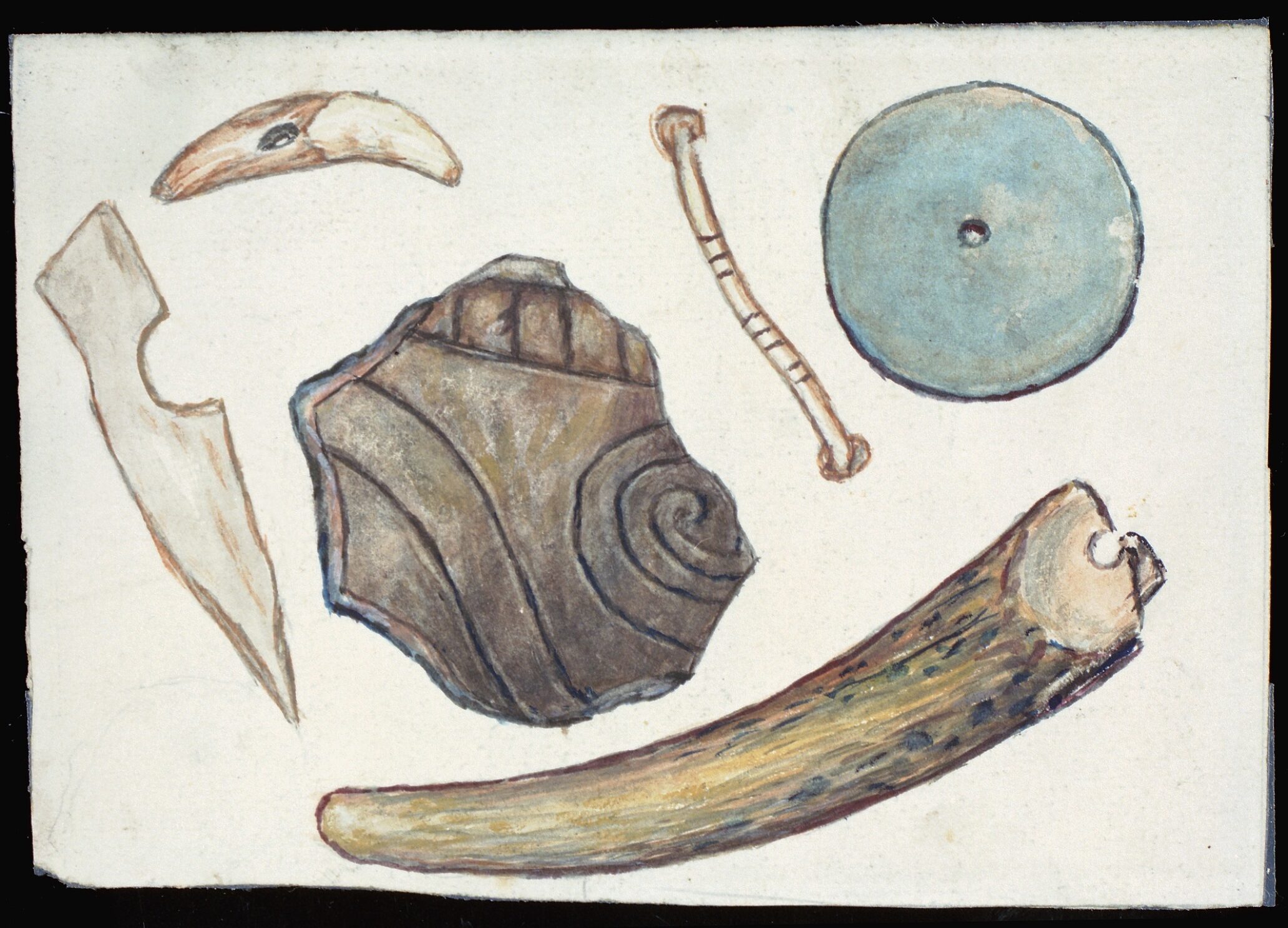
Artefacts by Nicolson (Image credit: Alistair Sutherland / CANMORE)
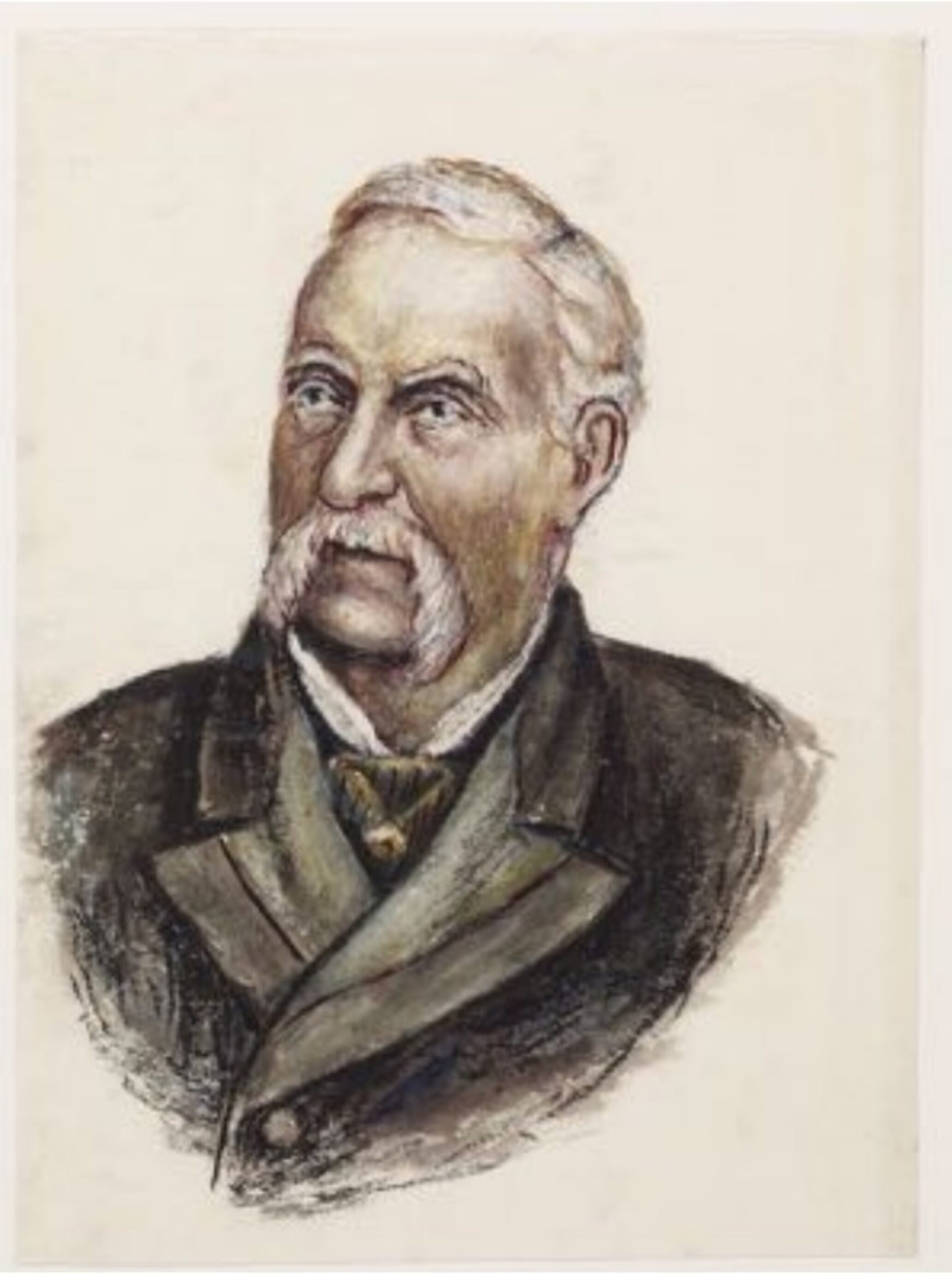
Francis Tress Barry, by Nicolson (Image credit: Alistair Sutherland / CANMORE)
Sir Francis Tress Barry (who will appear in a future Amazing Antiquarian blog!) was the MP for Windsor and in 1899 acquired Keiss Castle in Caithness – the building was a short distance from the house of John Nicolson. Tress Barry when quizzed about the various mounds that existed in the area, began to take an interest in what they might contain. Following the work of Samuel Laing (who will also appear in a later blog) he began the opening and photographing of these brochs. Caithness contains more brochs than any other area and with the help of John Nicolson, many of these were investigated and mapped.
The plans showing the size and shape, and the finds from within the brochs were recorded in pictorial form by John Nicolson, and it is these detailed drawings that enabled the Society of Antiquaries of Scotland to produce comprehensive documentation of the Caithness brochs: The Sir Francis Tress Barry Collection by The National Monuments of Scotland and a Catalogue, produced in 1988.
Again, Alexander Curle explains – “He assisted and encouraged Sir Francis Barry in his excavation, superintended all the work and made the plans, receiving, so I am told, 2/6 per day"
In 1911 with the publication of the Third Report of the Inventory of Ancient Monuments in the County of Caithness, Alexander Curle counted John Nicolson among the other eminent Caithness archaeologists –
Joseph Anderson (who will appear in a later blog), Henry Rhind and Sir Francis Tress Barry –
“Mr John Nicolson, Nybster, who has done as much in the field of Caithness Antiquities as any man.”
Nicolson’s respect and friendship for Sir Francis Tress Barry is evident in this spectacular sculpted remembrance of the man.
Nicolson supervised his excavation work at various Caithness brochs. His drawings of the archaeological finds show the minute details of the items and where they were found. Much of this work was used to inform the work of the Society of Antiquaries.
Caithness is home to more brochs than any other area and a considerable number of these are within the surrounding districts of Freswick, Keiss and Canisbay. Never wasteful, Nicolson constructed what is known as Mervyn’s Tower, from spoil collected from the Nybster Broch.
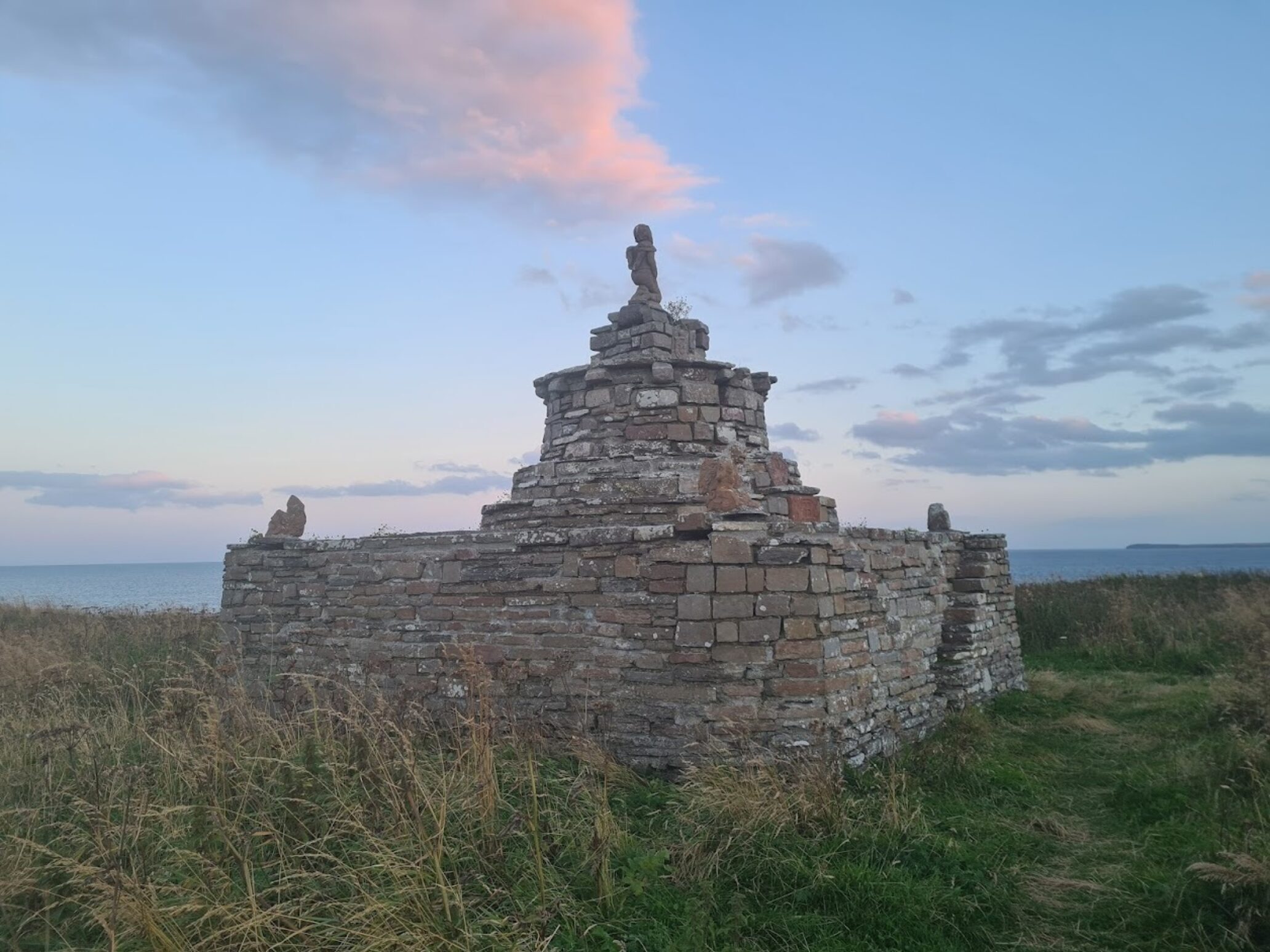
Mervyn's Tower (Image credit: Kenneth McElroy)
John Nicolson died at his home Summerbank House, Auckengill on 13 June 1934.
“The largest and most representative seen at a funeral on the east coast of Caithness…Quite a number of friends and admirers of the deceased antiquary came in private motor cars and there were two motor buses in attendance to convey the mourners to the burying place.”
The coffin was transported to Canisbay Churchyard where his remains were lowered into a grave above which stood a striking memorial sculpture that John Nicolson had himself created as a tribute to his wife who had predeceased him.
John Nicolson was “an aristocrat of the soil and the Norland race.” (John O’Groat Journal June 1934)
A man not just of his time but of all time.
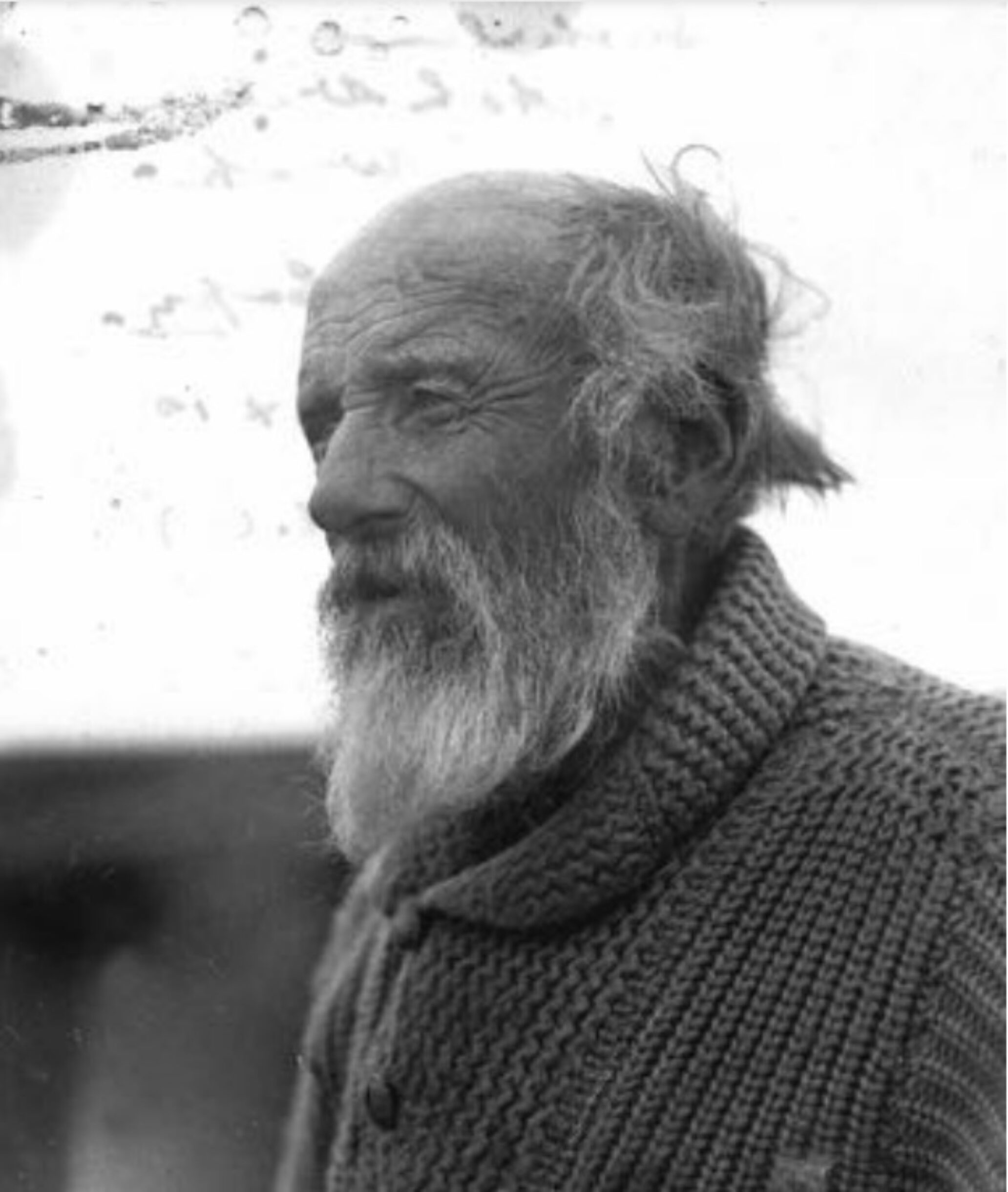
John Nicolson (1843 - 1934)
(Image credit: Alistair Sutherland / CANMORE)